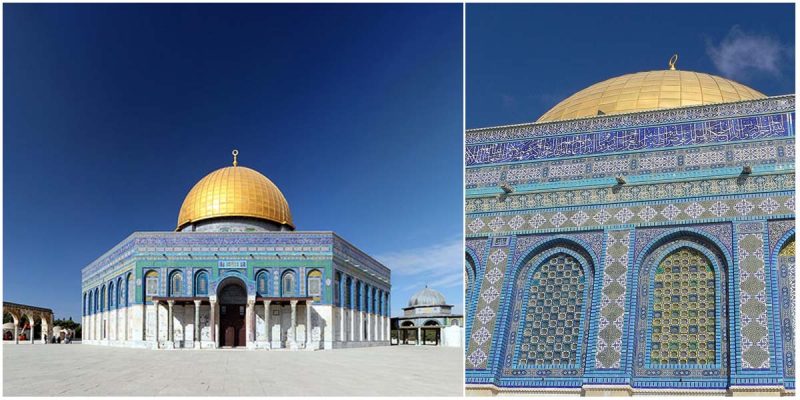The Dome of the Rock, or Qubbat al-Sakhrah in Hebrew, is considered to be a masterpiece of Islamic architecture.
It is a 7th century shrine located on the Temple Mount in the Old City of Jerusalem.
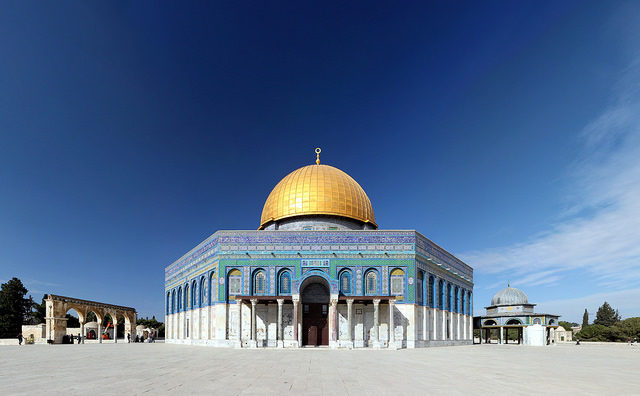
The Shrine was built during the Second Fitna by Caliph Abd al-Malik between 687 and 691 on the site of the Roman temple of Jupiter Capitolinus.
Construction costs were reportedly seven times the yearly tax income of Egypt.
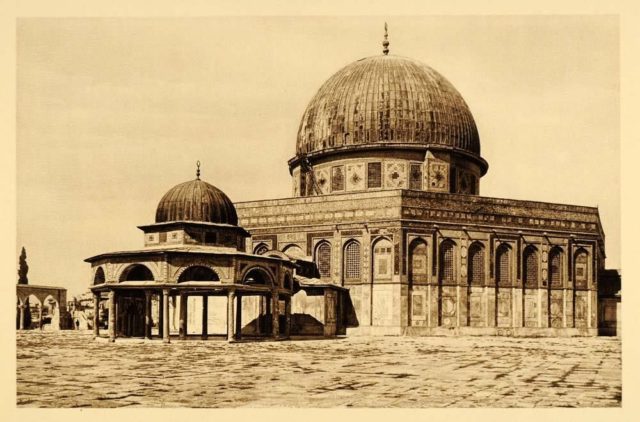
At the center of the Dome of Rock is the Foundation Stone, which bears a great significance for Jews and Muslims as the site of Abrahams’ attempted sacrifice of his son Isaac.
Muslims believe that the Prophet Muhammad ascended into heaven from this site.
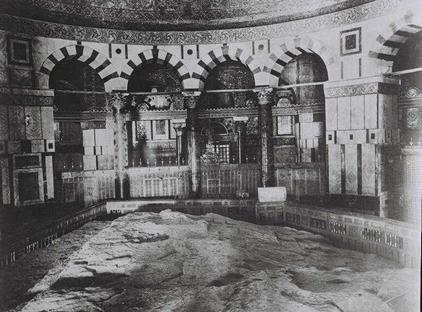
Its mosaics and architecture were patterned after nearby Byzantine churches and palaces, and it was not intended for the shrine to be a mosque, but a place for pilgrims.
On the outside, the edifice was significantly changed in the Ottoman period and again in the modern period.
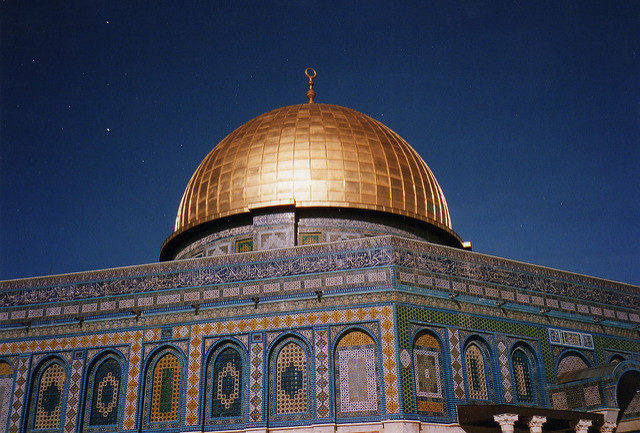
The exterior of the Dome was covered with tiles during the reign of Suleiman the Magnificent.
Several centuries after its completion, the interior of the dome was decorated with mosaic, faience, and marble.
Across the top of the tile work the 36th surah (Ya Sin) of the Quran was inscribed, and the 17th surah (Al-Isra) is inscribed above this.
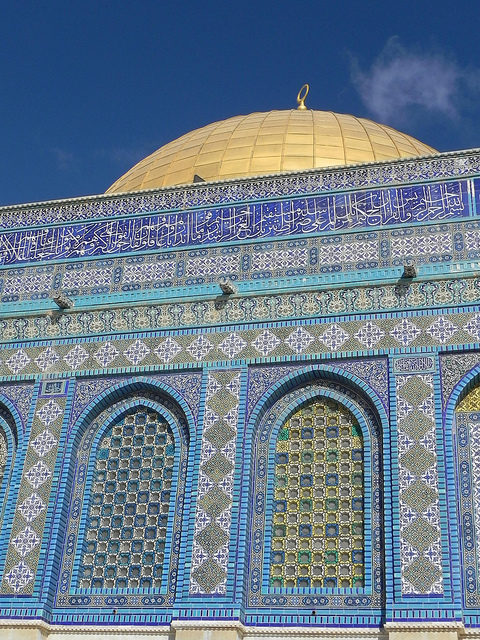
After an earthquake in Palestine on July 11th 1927, the dome was badly shaken and many of the repairs that had taken place over the previous years were undone.
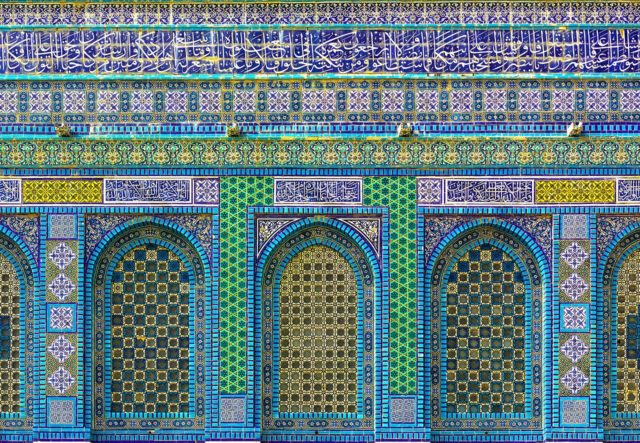
An extensive program of renovation was begun in 1955 by the government of Jordan.
Until the mid-twentieth century, only Muslims could visit the area, but since 1967 non-Muslims have been permitted limited access.
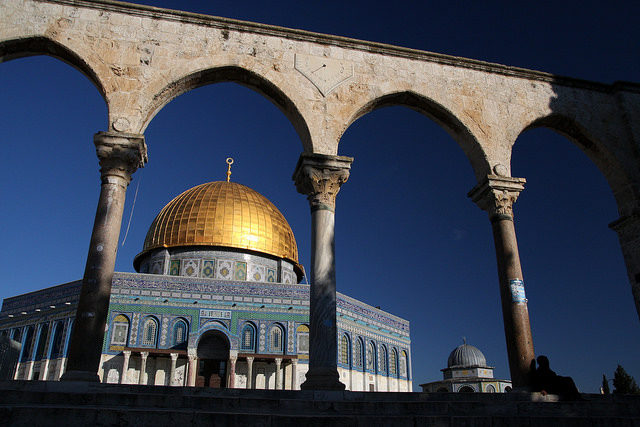
The Dome of the Rock is a UNESCO World Heritage Site and it has been called “Jerusalem’s most recognizable landmark.”
